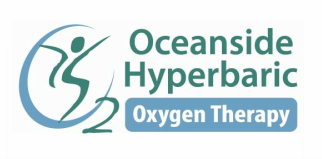Biofilms and Chronic Infections
|
|
Biofilms are communities of multiple types of pathogens that attach to tissues and envelop themselves with an extracellular matrix. This bacterial form relies upon a persistent inflammatory state in the body to provide them with nutrients. It is extremely resistant to antibiotics and immune responses. The colonies can seed other parts of the body with biofilm in times of immune suppression or stress and are believed to play an important part in the success of certain chronic bacterial infections. The combination of genetic antibiotic resistance and the formation of biofilm in the body is proving to be a very difficult combination for standard medical practice to address. No longer are antibiotics alone an effective treatment for chronic biofilm infections. Hyperbaric oxygen therapy (HBOT) in combination with antibiotics has shown a high success rate in many chronic infections now known to be biofilm infections.
|
The understanding of biofilm in human pathology is an emerging science. Researchers looking into how Lyme Disease (LD) becomes a chronic infection have identified a role of biofilm in LD and its co-infections. Dental plaque, is a common form of biofilm. There is some evidence that HBOT in combination with antibiotics is an effective way of treating biofilm in dental applications. Serious dental infections such as peridontitis and perimplantitis are biofilm infections, that have been shown to respond well with combination hyperbaric oxygen therapy (HBOT) and standard treatment. Also, a recent study has shown that HBOT enhances the effect of ciproflaxacin in pseudomonas aeruginosa biofilm.
The work of Dr. Randall Wolcott, MD of Southwest Regional Wound Care Centre (see Publications) has identified a biofilm component in many health conditions including: (source: chronic wounds and the medical biofilm paradigm)
The work of Dr. Randall Wolcott, MD of Southwest Regional Wound Care Centre (see Publications) has identified a biofilm component in many health conditions including: (source: chronic wounds and the medical biofilm paradigm)
|
|
You may notice that some of these conditions are Undersea and Hyperbaric Medical Society (UHMS) approved indications. These are conditions where HBOT has been proven effective and is reimbursable as a treatment. One major rationale for the effectiveness is that HBOT potentiates antibiotics in these serious infections. It is possible that HBOT may have a direct effect on biofilms, but more research is needed. As the evidence of combination antibiotic/HBOT approach versus biofilm grows, we need to consider if may apply to borrelia biofilm.
Hyperbaric Oxygen Therapy/Antibiotics effect on Biofilm Resources
Hyperbaric Oxygen Therapy/Antibiotics effect on Biofilm Resources
Protease Supplements Disrupt Biofilm
Proteolytic enzymes, otherwise known as proteases are enzymes that are capable of digesting proteins. The protease that is available in supplement form that has been shown to have an effect on biofilms is Serrapeptase, otherwise known as Serratiopeptidase. We carry a Canadian made Tristar Serrapeptase product.
Serrapeptase Biofilm Scientific Resources
Serrapeptase Biofilm Scientific Resources
- 2013 - A new anti-infective strategy to reduce the spreading of antibiotic resistance by the action on adhesion-mediated virulence factors in Staphylococcus aureus.
- 2013 - Comparison of the action of different proteases on virulence properties related to the staphylococcal surface.
- 2011 - A new anti-infective strategy to reduce adhesion-mediated virulence in Staphylococcus aureus affecting surface proteins.
- 2008 - Protease treatment affects both invasion ability and biofilm formation in Listeria monocytogenes.
- 2006 - The effect of proteolytic enzyme serratiopeptidase in the treatment of experimental implant-related infection.
- 1993 - Proteolytic enxymes: a new treatment strategy for prosthetic infections?
Why am I still sick? - Movie Trailers
To further your understanding of biofilms, you may want to connect with the work of Richard Longland, who has developed an extensive library of video interviews with experts studying biofilms. He has also put together the documentary, Why Am I Still Sick? that compiles numerous interviews in a full length, high definition presentation.
|
|
|
Further links for Richard Longlands work compiling expert interviews and research links on biofilms:

